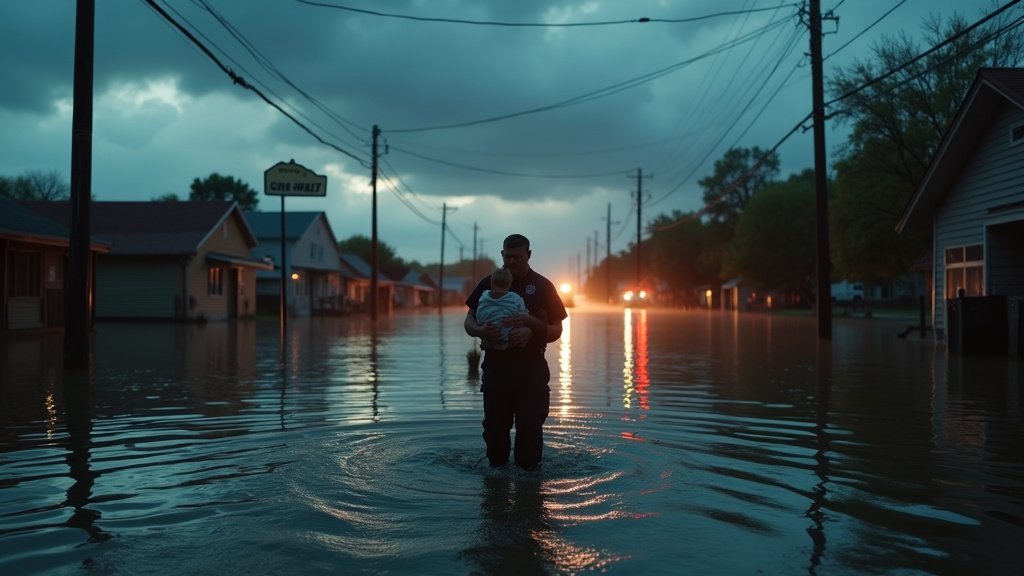Texas Flooding Exposes Critical Gaps in Emergency Preparedness
Recent flooding events across Texas have once again brought the spotlight to the crucial issue of emergency preparedness, or rather, the lack thereof. A newly published editorial has served as a harsh but necessary reminder of the vulnerabilities that persist within the state’s response infrastructure, highlighting a critical need for comprehensive reform. The editorial’s central argument is simple: Texas must proactively address existing shortcomings in its emergency response systems to mitigate the devastating impact of future natural disasters.
The Editorial’s Call to Action
The editorial acts as a wake-up call for Texas, urging a thorough examination of its preparedness protocols. It doesn’t shy away from pointing out the specific failures that have been exacerbated by recent flooding. The core of the editorial’s argument focuses on preventing similar scenes of widespread devastation, ensuring that communities are not left to fend for themselves when faced with the fury of nature. The emphasis on proactive measures is a key tenet, stressing the importance of not just reacting to disasters, but anticipating them and building resilience at the local level. The article points out that the responsibility lies with the state to provide resources and support to enable that preparedness.
Legislative Scrutiny Reveals Deficiencies
Adding weight to the editorial’s concerns, a recent state legislative hearing provided further insight into the state’s preparedness posture. This hearing served as a public forum to examine the specifics of emergency response protocols and, crucially, to identify existing weaknesses. The revelations were stark. The hearing underscored the necessity for enhanced training for emergency responders across the state. It became clear that many first responders are not adequately prepared to deal with the complex challenges that arise during flood events, specifically in terms of resource management and coordination. Furthermore, the hearing brought to light critical issues regarding contact information for emergency personnel. In a crisis, rapid and reliable communication is paramount; the hearing indicated that existing systems are sometimes flawed, impeding the speed and efficiency of the response.
Training and Coordination: The Cornerstones of Reform
One of the key takeaways from both the editorial and the legislative hearing is the critical role of effective training. Emergency responders are the front line, and they need to be equipped with the skills and knowledge to handle a wide range of situations. The types of scenarios that could be covered in training are diverse: from swift water rescue and mass casualty incident management, to the more basic, like effective damage assessment and resource allocation. Beyond the formal training, exercises should be regularly conducted to test preparedness, and make sure that the responders can work seamlessly with each other. These exercises, designed to simulate realistic disaster scenarios, can provide valuable insights into areas where protocols may need refinement. This also highlights the importance of continuing education and adaptation in the face of changing environmental conditions and increasingly extreme weather patterns.
Communication: A Lifeline in Times of Crisis
The improvement of communication networks is equally important. In the chaos of a flood, clear and consistent communication between emergency responders, government agencies, and the public is a lifeline. The legislative hearing exposed vulnerabilities in the existing communication systems, highlighting the need for better contact information and updated protocols. This must be a priority for the state, to ensure that responders can reach each other, and that information can be quickly disseminated to the public in affected areas. This includes upgrading communication technologies to include redundant systems and backup power sources, so that responders are not impacted by a loss of communication systems.
Mitigating Future Disasters: A Proactive Approach
The editorial and the legislative hearing coalesce around a common theme: the need for a proactive approach to disaster preparedness. This isn’t just about cleaning up after a flood; it’s about investing in systems and protocols that will help prevent devastation in the first place. The focus must be on creating a local response framework that’s robust, well-trained, and readily accessible. This involves a multi-faceted approach, from bolstering infrastructure to building community awareness and supporting early warning systems.
The recent flooding in Texas, therefore, serves as a painful but crucial lesson. It’s a reminder that the state’s ability to protect its citizens during emergencies hinges on its preparedness. By taking the recommendations seriously, Texas has a chance to create a response system that will provide communities with far better protection from future disasters, and to mitigate the worst effects of climate change.






